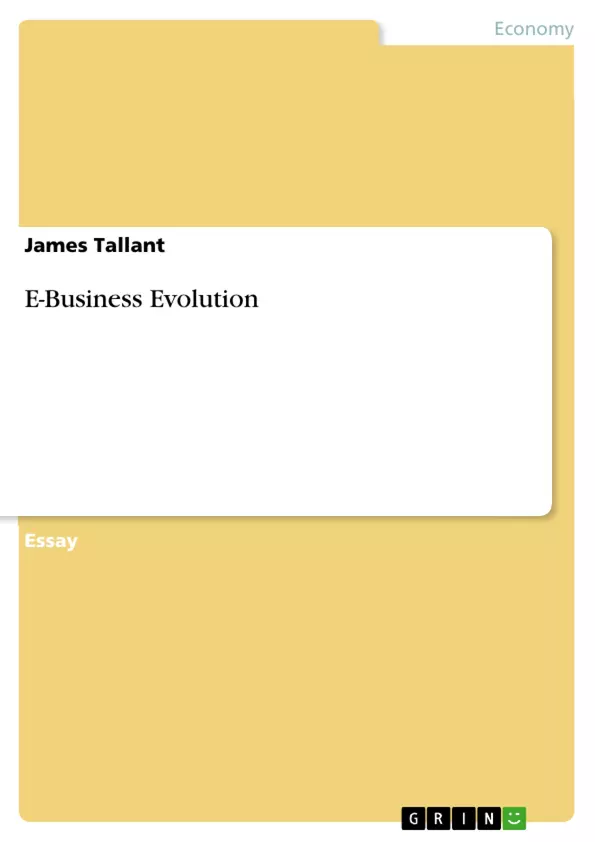The advent of the internet has provided organizations the ability to conduct businesses beyond the traditional brick and mortar business model and expand beyond organizational and geographic boundaries. Organizations that can adapt and control the potential of the Internet and its related technology will find success in attracting new customers, retaining customers, streamlining channels, operations, and processes, attracting new partners, and improving productivity. This paper will review the evolution of e-business or electronic business as well as compare and contrast the differences and limitations of e-business with e-commerce.
Table of Contents
- Evolution of E-Business
- Differences between E-Business and E-Commerce
- Limitations between E-Business and E-Commerce
Objectives and Key Themes
This paper explores the evolution of e-business, highlighting its different stages and the integration of electronic sales data with other organizational functions. It also contrasts e-business with e-commerce, examining their differences, limitations, and the trust factor involved in online transactions.
- Evolution of e-business and its three generations
- Comparison and contrast of e-business and e-commerce
- Technological and trust limitations in e-business and e-commerce
- Impact of e-business on organizational processes and culture
- Benefits of e-business for customer satisfaction and competitive advantage
Chapter Summaries
The first section of the paper details the evolution of e-business, outlining the three generations of electronic business functions. It emphasizes the importance of integrating electronic sales data with other organizational functions in the third and current stage of evolution.
The second section contrasts e-business and e-commerce, highlighting their shared reliance on the internet and related technology. While e-commerce focuses on transactions, e-business integrates electronic sales with internal functions, impacting organizational culture and processes.
The third section explores the limitations of both e-business and e-commerce. Technological limitations like glitches and system incompatibilities can lead to inefficiencies in the supply chain. Trust issues related to online transactions, such as privacy, data security, and identity theft, are also discussed.
Keywords
E-business, e-commerce, internet, technology, supply chain management, customer satisfaction, trust, security, data integration, organizational culture, competitive advantage, technological limitations, trust risks, information transfer.
- Citar trabajo
- James Tallant (Autor), 2010, E-Business Evolution, Múnich, GRIN Verlag, https://www.grin.com/document/167265



